You must have a big solar system. This will be your cruising life blood. It must charge the batteries every day and provide for all your electrical needs, without the need to run the engine. You will need about 10ft x 4ft of solar panels.
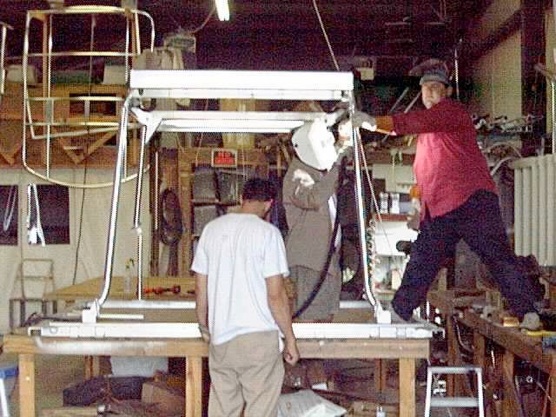
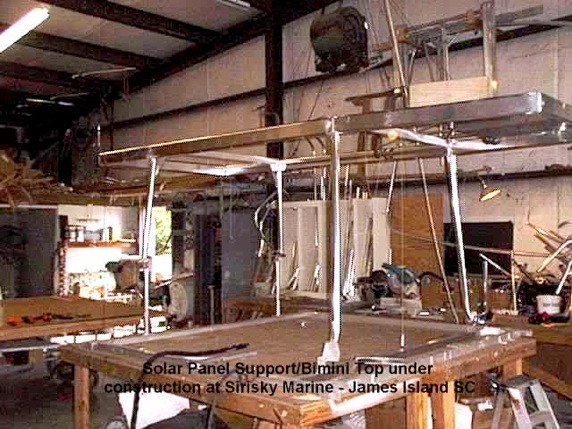
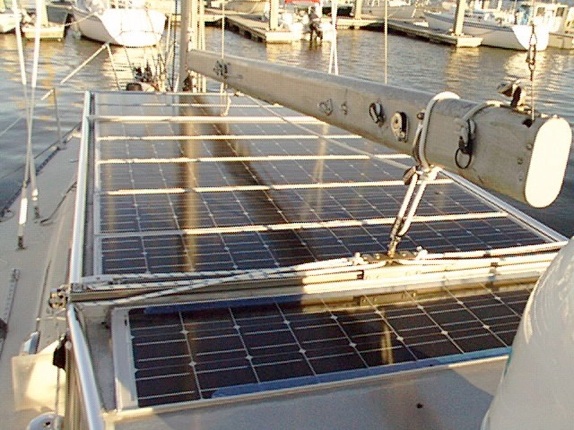
But after Bermuda I removed the boom and track and sailed under jib alone. Then there was no shadow over the panels and it produced lots of energy at sea. Few people sail for weeks at a time at sea, but it is vital for long distance sailors to make electricity at sea without burning up precious fuel. You must use running lights all night long (COLREGS.) and the refrigeration takes a lot of electricity.

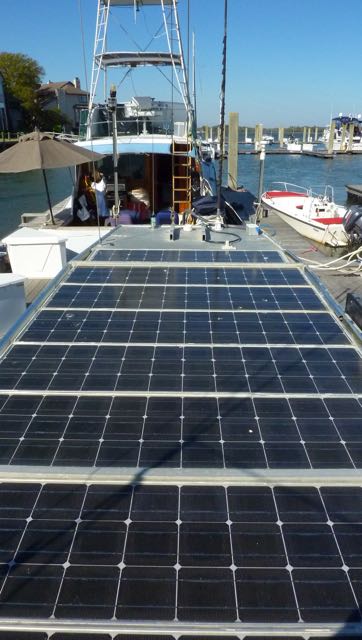
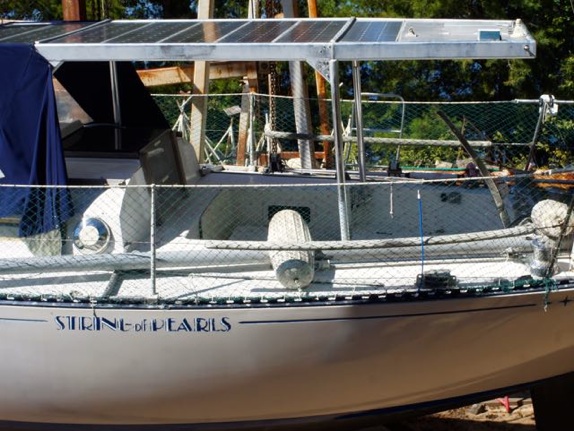
This is one of the best additions to the boat. The solar array consists of 8 Siemens 55 watt panels, for a total of 400+ watts. At peak mid-day at Latitude 12 degrees N, it can generate 24 Amps into a discharged battery, but since I need only 100 A-Hrs per day, the batteries are always charged fully. I never run the engine to charge batteries.
The solar array provides a strong bimini sun shade for the tropics. It also catches rain water in troughs along the edges, which is funneled into jugs.
The frame also acts as a ground plane for antennae. It acts like the metal bodywork of a vehicle and provides a counterpoise for a vertical antenna fo HF and VHF.
The frame has solid hand holds for walking along the side deck, and provides something to hang onto at sea. I can also lean on at the back it to take photos.





